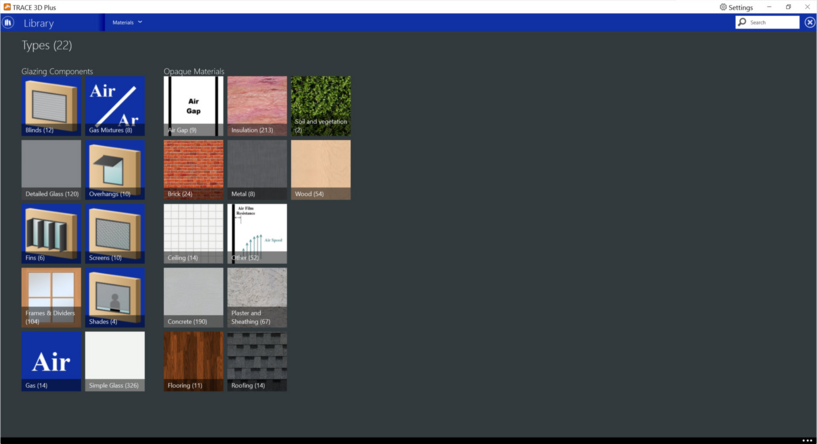Materials
The materials library category allows you to create and manage the necessary materials that will serve as construction layers. There are two types of materials: Glazing Components and Opaque Materials.
Glazing Components include materials that can be added to windows, skylights, and glass door constructions. The solar radiation transmitted by these layers enters the zone and is a component of the zone load. The solar radiation absorbed in each solid layer (glass, shade, screen, or blind) participates in the window layer heat balance calculation. The visible transmittance and reflectance properties are used in the daylight calculation. “Outside” values represent the side of the glass closest to the outside air or adjacent zone and “Inside” values represent the side closest to the zone that the window is defined in.
Opaque materials can either be defined by using the four main thermal properties, (thickness, conductivity, density and specific heat), or as a no mass material using only the thermal resistance. The first option requires the knowledge of the thermal properties of the material. This allows EnergyPlus™ to take into account the thermal mass of the material and thus the transient conduction effects can be evaluated. Using the simple no mass option forces EnergyPlus™ to assume steady state heat conduction through that material layer.
